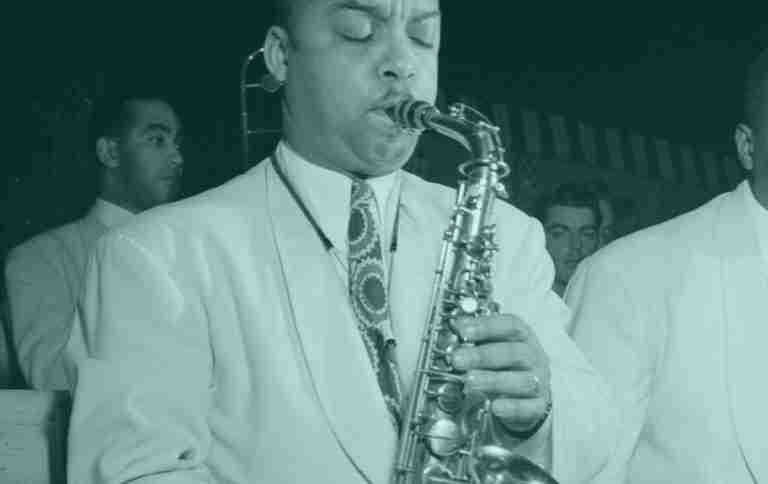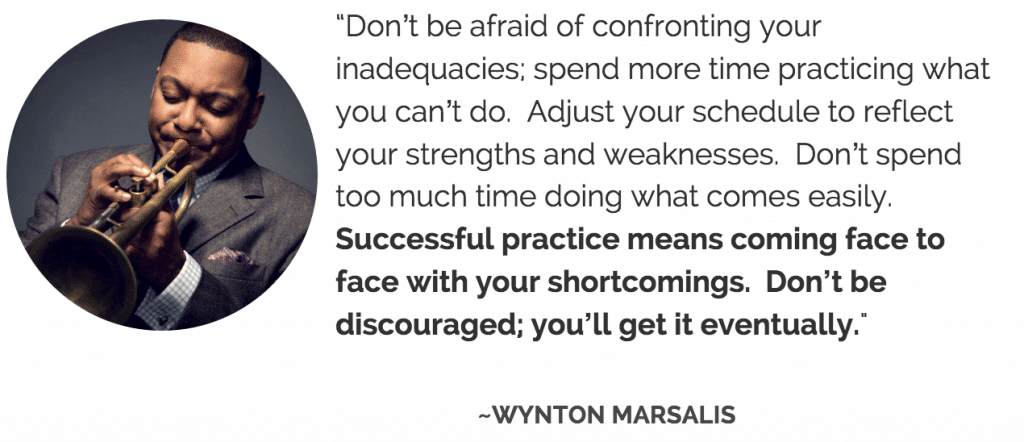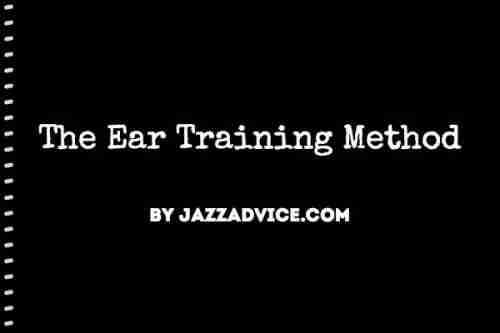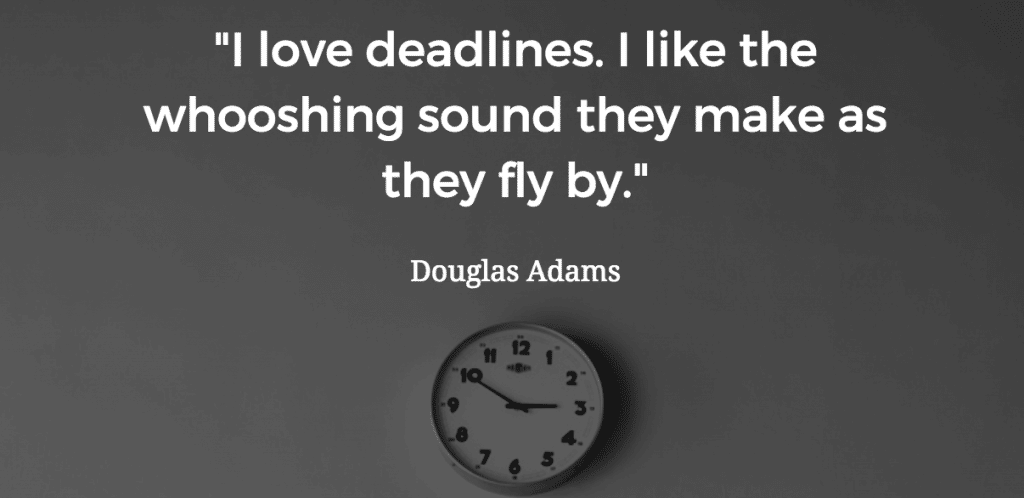Contrary to what many people think, great solos don’t just happen by chance. They aren’t a lucky run of notes that happen to sound good or a sudden stroke of divine inspiration that hits once you walk on stage. If only it were that easy!
The ability to get up and improvise in front of an audience takes some guts and creativity, but it also requires something much more concrete: planning.
Despite what it looks like from the audience, improvisation isn’t magic and it’s not all spontaneous…
What the best improvisers know all too well is that there’s a process that leads to every great solo.
Let me explain…
The secret of the prepared improviser
Think of your favorite solo.
Miles Davis’ solo on So What immediately pops into my mind.
What most musicians forget is that this stellar solo started before Miles put the trumpet to his lips.
It started before he showed up to the gig or recorded Kind of Blue. It began taking shape back in the practice room weeks, months, even years before…
And this is exactly what many players miss when they set out to learn jazz improvisation. Improvising seems like a spur of the moment activity, however there is a process that leads to every great solo.
If you’re unhappy with the way you’re soloing right now, don’t get frustrated with that last concert and don’t blame the tune or how your instrument felt that day.
The process that lead to that solo started long before you stepped on stage. And today we’re going to show you how to get on the path to sounding good every time.
Here are 7 steps that lead to a stellar solo:
1) Shoot for a goal
The players that sound great don’t rely on talent.
And they didn’t end up with their sound or musical skills by chance…
At some point in their development these players made a conscious decision to get better. They took an honest look at their playing and said “This is where I want to be musically and this is what I need to do to get there.”
And the same must be true for you…
Random practice, no matter how dedicated or consistent, isn’t going to make you an excellent improviser. You need to have a musical goal and a specific plan to get you there.
This process starts with a goal. And this goal leads to a plan of action – finding the best teacher you can, searching for specific recordings, a list of tunes to learn, and important solos to study…
It doesn’t matter if you can’t achieve this goal today, by setting your sights on a target you’ll quickly find the skills you need to get there.
So ask yourself: What do you want to accomplish musically? Where is all this practice leading to?
Remember, learning to improvise is a lot like planning a trip. If you never select your destination, you’re never going to get there!
2) Set aside time for listening
I’m guessing you work on technique and scales…
And that you’ve been studying chords and the progressions to tunes.
But the one thing that we all brush aside is listening.
Focused listening is just as important as time spent practicing your instrument – it plants the sound, time and ideas of the jazz language in your ear.
And it teaches you the stuff that you can’t get from books or discussions about music theory.
Listening creates a model in your mind of what you want to sound like, a library in your subconscious that you can draw from every time you improvise.
There is a reason that the greatest improvisers keep telling us to listen to the masters:
3) Create a consistent practice routine
Practice is essential for any serious player.
But the one thing that will set you up for success in performance is consistency.
We’ve all started learning a tune or transcribing a solo, but it’s those players that come back day after day that achieve their goals.
The skills and sounds that come out in your solo are the direct result of a consistent daily routine.
Remember, you don’t want to be stuck thinking about theory, technique, or sound production when you’re improvising – you need to focus on being creative.
Need some help setting up your practice routine? Check out this presentation:
Along the way you may need to adjust your process of getting to your goal. For example, to play the tunes and transcribe the solos I wanted to learn I had to go back and work on the basics:
- Work on ear training
- Improve my instrumental technique
- And focus on learning language for the 4 key sounds
Once you have your goals create a consistent practice routine that will get you to your musical destination.
4) Slow practice on the hard stuff
One of the main things separating average improvisers from great players is the content of their practice routine.
Players that aren’t improving spend too much practice time on the things they’re already good at, a sort of repeat track of their greatest hits that they revisit over and over again in the practice room.
Great players however, take a different approach. They aren’t afraid to sound bad in the practice room and tackle their musical weaknesses.
Take a look at your own practice routine. Are you avoiding your weak spots?
Maybe it’s ear training, maybe it’s transcribing solos, and maybe it’s tackling music theory. You know where you need to improve.
Be patient and use a metronome. Incorporate time into everything you play and go slow!
5) Narrow down your focus and increase your progress
There are 1000’s of tunes out there with different chord progressions. Hundreds of famous players and solos…
So what are you going to practice?
It’s easy to get overwhelmed and many players get stuck trying to take on too much at once.
To start seeing improvement in your playing you must narrow down your practice to the essential elements of any solo.
Do you have…?
- Technique in all 12 keys
- Language over the 4 types of chords
- An understanding of common chord relationships
Jazz theory is easier than you think and most jazz standards share common elements. Isolate these essentials in your practice routine and you’ll improve much more quickly.
6) Get great ears!
At some point you’ll find yourself in a situation where you don’t know the melody.
And you don’t know the chord progression.
But guess what? You still have to come up with a solo that sounds good.
In these situations the one thing that will save you are your ears. You need to be able to hear and recognize the melodies and chords happening around you in seconds.
To create a solo on the spot you need to figure out the key, the chord quality, the chord progression, and the melody as quickly as you can. This means spending some serious time improving your ears.
Many musicians skip over ear training in their practice routines and settle for an intellectual understanding of intervals and chords. But without ear training there will always be a barrier between you and the music.
Start training your ears today.
For an easy way to improve your ears check out the Ear Training Method! Learn more about the in-depth 3 volume course here…
7) Set deadlines and schedule performances
Practice is great.
But performance puts on the pressure and motivates you to accomplish more than you think you’re capable of.
To get to the next level as an improviser you need to be put on the hot seat. You need to put the skills you’ve been practicing to the test.
Set deadline that’s going to keep you awake at night. Some pressure that’s going to push you to achieve more in the practice room.
Schedule a session with some of your friends and select a list of tunes that you’ll all have memorized by that date. Book a gig, plan a concert, perform for your family…
The more deadlines you have, the more you’ll push yourself to improve. And the more you improvise in front of an audience, the easier it’s going to get.
Don’t leave your next solo up to chance…
You can wish you played better.
And you can cross your fingers and hope for the best in your next solo – who knows, maybe you’ll get lucky?
Or you can set yourself up for success in the practice room today. Unless you make a change in your routine, your next solo is going to sound like the one before it…and the one before that.
You can do better!
To improve the level of your solos start by incorporating these 7 steps into your musical approach:
- Set a goal
- Listen with focus
- Create a consistent practice routine
- Slow practice on your musical weak points
- Narrow down the scope of your practice material
- Get great ears
- Set deadlines and perform
You have more control over your next improvised solo than you think. And that process starts today…













